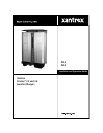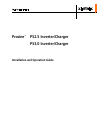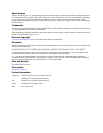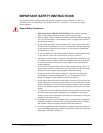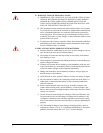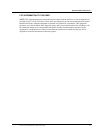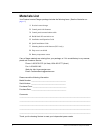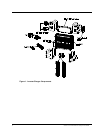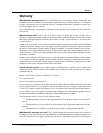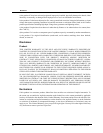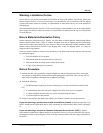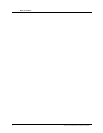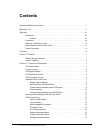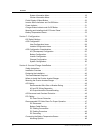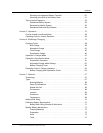
Prosine 2.5/3.0 Installation & Operation Guide i
IMPORTANT SAFETY INSTRUCTIONS
This manual contains important safety and operating instructions as prescribed by UL and CSA
specifications for inverter/chargers. This manual covers PS 2.5 and PS 3.0, 12- and 24-volt model
inverter/chargers.
General Safety Precautions
1. READ AND SAVE THESE INSTRUCTIONS. They contain important
safety and operating information for the Prosine inverter/charger.
2. Before using the inverter/charger, read all instructions and cautionary markings
on (1) the inverter/charger, (2) the batteries, and (3) all appropriate sections of
this instruction manual.
3. Do not expose the Prosine inverter/charger to rain, snow, spray or bilge water.
To reduce risk of fire hazard, do not cover or obstruct the ventilation openings.
Do not install the Prosine inverter/charger in a zero-clearance compartment.
Overheating may result.
4. Do not use attachments not recommended or sold by the manufacturer. Doing
so may result in a risk of fire, electric shock, or injury to persons.
5. The Prosine inverter/charger is designed to be permanently connected to your
AC and DC electrical systems. Xantrex recommends that all wiring be done by
a certified technician or electrician to ensure adherence to proper electrical
wiring regulations.
6. To avoid a risk of fire and electric shock, make sure that existing wiring is in
good electrical condition; and that wire size is not undersized. Do not operate
the Prosine inverter/charger with damaged or substandard wiring.
7. Do not operate the Prosine inverter/charger if it has received a sharp blow,
been dropped, or otherwise damaged in any way. If the Prosine inverter/
charger is damaged, see the Warranty section of this manual.
8. Do not disassemble the Prosine inverter/charger. See the Service section of the
Owner’s Manual for instructions on obtaining service for the Prosine inverter/
charger. Attempting to service the unit yourself may result in a risk of electrical
shock or fire. Internal capacitors remain charged long after all power is discon-
nected.
9. To reduce risk of electrical shock, disconnect both AC and DC power from the
Prosine inverter/charger before attempting any maintenance or cleaning or
working on any circuits connected to the Prosine inverter/charger. Turning off
controls will not reduce this risk.
10. Grounding: the Prosine inverter/charger must be provided with an equipment-
grounding conductor connected to the AC input ground terminal. Grounding
and all other wiring must comply with local codes and ordinances
11. For marine applications in the United States, external connections to the Pros-
ine inverter/charger shall comply with the United States Coast Guard Electrical
Regulations (33CFR183, Sub part 1).



